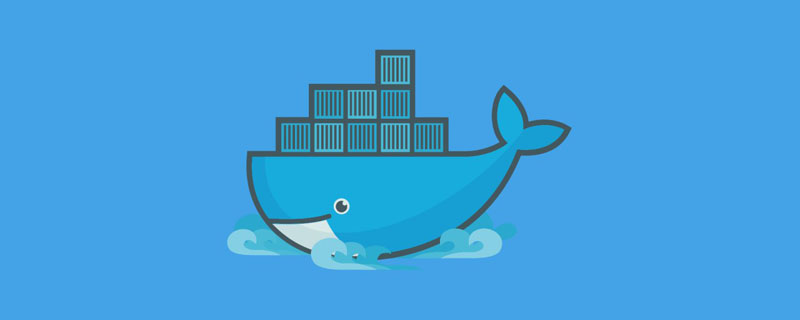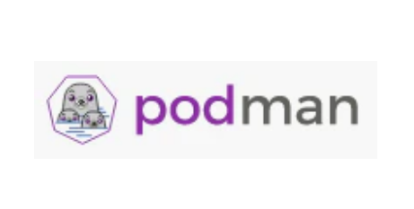Is there any software similar to docker?
There are software similar to docker: 1. Podman, which is an open source Linux native container engine without a daemon; 2. LXD, which is an open source container engine designed specifically for LXC Linux containers; 3. Buildah, which is It is an OCI image building tool developed by Red Hat for containerized systems; 4. RunC, etc.

The operating environment of this tutorial: linux7.3 system, docker version 20, Dell G3 computer.
There is software similar to docker.
Docker was born in 2013 and popularized the concept of containers, so much so that most people still equate the concept of containers with "Docker containers".
As the first to adopt the technology, Docker sets the standards that new entrants must adhere to. For example, Docker has a large system image library. All alternatives must use the same image format while attempting to change one or more parts of the entire stack on which Docker is based.
During this period, new container standards emerged and the container ecosystem developed in different directions. Nowadays, there are many ways to use containers besides Docker.
Container management software similar to docker
1, Podman

Podman is a daemon-less open source Linux native container engine developed by RedHat, which is used to build, run and manage Linux OCI containers and container images. Although Podman provides a command line interface similar to Docker, it does not operate in the same way.
One significant difference between Docker and Podman is that Docker runs a persistent, self-sufficient runtime to manage its objects or daemon called dockerd; while Podman does not rely on a daemon to work. Instead, Podman starts the container as a child process. It also interacts directly with the registry and the Linux kernel using runtime processes. For this reason, Podman is called a daemonless container technology.
The absence of a daemon increases Podman's flexibility as a container engine and eliminates dependence on a single process. Another big difference between Podman and Docker is that it does not require root privileges. This feature provides an additional safety buffer, limiting certain potentially dangerous processes that could manipulate critical system settings and make the container and contained applications vulnerable.
Additionally, Podman can run pods - collections of one or more containers, managed as a single entity, and utilizing a shared resource pool. With this capability, Podman users can move their workloads to Kubernetes.
2. LXD
LXD is an open source container engine designed specifically for LXC Linux containers. LXC enables users to run applications in isolated containers or virtual environments similar to virtual machines without the technical burden of managing individual cores. LXD provides an interface to the LXC software library and creates a daemon process that handles networking, data storage, and management of multiple LXC containers. Although LXC can be run as a standalone tool, it has a limited subset of functionality. LXD provides these additional features and therefore relies on LXC to work.
The main differences between LXD and Docker are as follows. Unlike Docker's design pattern that recommends a single process per container, containers in LXC/LXD can run multiple processes. Additionally, Docker containers are more portable, effectively abstracting resources compared to LXD. Finally, Docker supports running on Windows and macOS environments, but LXD only supports Linux.
3. containerd
containerd is an advanced container runtime that provides an interface between the operating system and the container engine by running runc at the bottom. runc is a daemon supported on Windows and Linux that abstracts operating system-specific functionality to make it easier to run and oversee containers and manage image transfers and storage.
This level of abstraction provided by containerd eliminates the complexity of making several low-level system calls, allowing container portability. However, unlike Docker, containerd does not handle image building or volume creation. Interestingly, containerd was the default runtime for Docker and is now a standalone tool, just like runc. This also makes containerd a convenient orchestration tool like Kubernetes, one of the most popular Docker alternatives.
4. Buildah
Buildah is an OCI image building tool developed by the Red Hat Foundation for containerized systems. It is a tool that provides functionality similar to running `docker build` in Docker. Buildah is often used together with Podman to complement each other. For example, Podman uses a subset of Buildah functionality under the hood to implement its build process.
It can build images from a Dockerfile or Containerfile and produce the same images as those created with Docker because these images are OCI compliant. In addition, it provides fine-grained control over image layers, allowing multiple modification commits in a single layer. It also provides the ability to build an image from scratch, an image that contains no content, which gives users the freedom to add only the packages required to run the application. Finally, unlike Docker, in Buildah users can only see the images they build.
5. BuildKit
BuildKit is a second-generation Moby project that builds images and is available as an experimental feature in newer Docker versions. Like Docker, it runs using a daemon. However, one of the main differences between standard Docker builds and BuildKit is that the former builds layer by layer, while the latter provides parallel build processing. This feature improves performance and makes builds faster. BuildKit also allows skipping unused stages, improves incremental builds, and allows rootless builds. Additionally, BuildKit uses a cache to reduce the need to rebuild each layer of the image.
6. Kaniko
Kaniko is a Google image building tool that can build images from Dockerfiles. It is daemonless like Buildah, but focuses more on building images in Kubernetes. Kaniko is not very convenient for local development instances because it is usually run as an image with a container orchestrator such as Kubernetes. Kaniko can be a useful tool for continuous integration and delivery pipelines in Kubernetes clusters.
7. RunC
RunC was previously a module embedded into the Docker architecture and was released as a standalone tool in 2015. It has since become a widely used, standardized, and interoperable container runtime. DevOps teams can use it as part of Docker or other custom container engines. RunC belongs to the container runtime part of the containerization ecosystem. The container runtime is the lower-level component used in the container engine that handles container running.
Recommended learning: "docker video tutorial"
The above is the detailed content of Is there any software similar to docker?. For more information, please follow other related articles on the PHP Chinese website!

Hot AI Tools

Undresser.AI Undress
AI-powered app for creating realistic nude photos

AI Clothes Remover
Online AI tool for removing clothes from photos.

Undress AI Tool
Undress images for free

Clothoff.io
AI clothes remover

Video Face Swap
Swap faces in any video effortlessly with our completely free AI face swap tool!

Hot Article

Hot Tools

Notepad++7.3.1
Easy-to-use and free code editor

SublimeText3 Chinese version
Chinese version, very easy to use

Zend Studio 13.0.1
Powerful PHP integrated development environment

Dreamweaver CS6
Visual web development tools

SublimeText3 Mac version
God-level code editing software (SublimeText3)

Hot Topics
 1387
1387
 52
52
 How to update the image of docker
Apr 15, 2025 pm 12:03 PM
How to update the image of docker
Apr 15, 2025 pm 12:03 PM
The steps to update a Docker image are as follows: Pull the latest image tag New image Delete the old image for a specific tag (optional) Restart the container (if needed)
 How to use docker desktop
Apr 15, 2025 am 11:45 AM
How to use docker desktop
Apr 15, 2025 am 11:45 AM
How to use Docker Desktop? Docker Desktop is a tool for running Docker containers on local machines. The steps to use include: 1. Install Docker Desktop; 2. Start Docker Desktop; 3. Create Docker image (using Dockerfile); 4. Build Docker image (using docker build); 5. Run Docker container (using docker run).
 How to exit the container by docker
Apr 15, 2025 pm 12:15 PM
How to exit the container by docker
Apr 15, 2025 pm 12:15 PM
Four ways to exit Docker container: Use Ctrl D in the container terminal Enter exit command in the container terminal Use docker stop <container_name> Command Use docker kill <container_name> command in the host terminal (force exit)
 How to copy files in docker to outside
Apr 15, 2025 pm 12:12 PM
How to copy files in docker to outside
Apr 15, 2025 pm 12:12 PM
Methods for copying files to external hosts in Docker: Use the docker cp command: Execute docker cp [Options] <Container Path> <Host Path>. Using data volumes: Create a directory on the host, and use the -v parameter to mount the directory into the container when creating the container to achieve bidirectional file synchronization.
 How to view the docker process
Apr 15, 2025 am 11:48 AM
How to view the docker process
Apr 15, 2025 am 11:48 AM
Docker process viewing method: 1. Docker CLI command: docker ps; 2. Systemd CLI command: systemctl status docker; 3. Docker Compose CLI command: docker-compose ps; 4. Process Explorer (Windows); 5. /proc directory (Linux).
 How to check the name of the docker container
Apr 15, 2025 pm 12:21 PM
How to check the name of the docker container
Apr 15, 2025 pm 12:21 PM
You can query the Docker container name by following the steps: List all containers (docker ps). Filter the container list (using the grep command). Gets the container name (located in the "NAMES" column).
 How to save docker image
Apr 15, 2025 am 11:54 AM
How to save docker image
Apr 15, 2025 am 11:54 AM
To save the image in Docker, you can use the docker commit command to create a new image, containing the current state of the specified container, syntax: docker commit [Options] Container ID Image name. To save the image to the repository, you can use the docker push command, syntax: docker push image name [: tag]. To import saved images, you can use the docker pull command, syntax: docker pull image name [: tag].
 How to start mysql by docker
Apr 15, 2025 pm 12:09 PM
How to start mysql by docker
Apr 15, 2025 pm 12:09 PM
The process of starting MySQL in Docker consists of the following steps: Pull the MySQL image to create and start the container, set the root user password, and map the port verification connection Create the database and the user grants all permissions to the database





